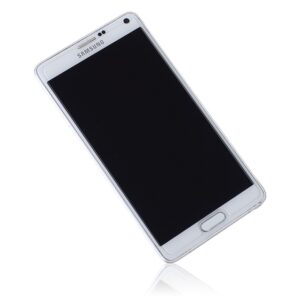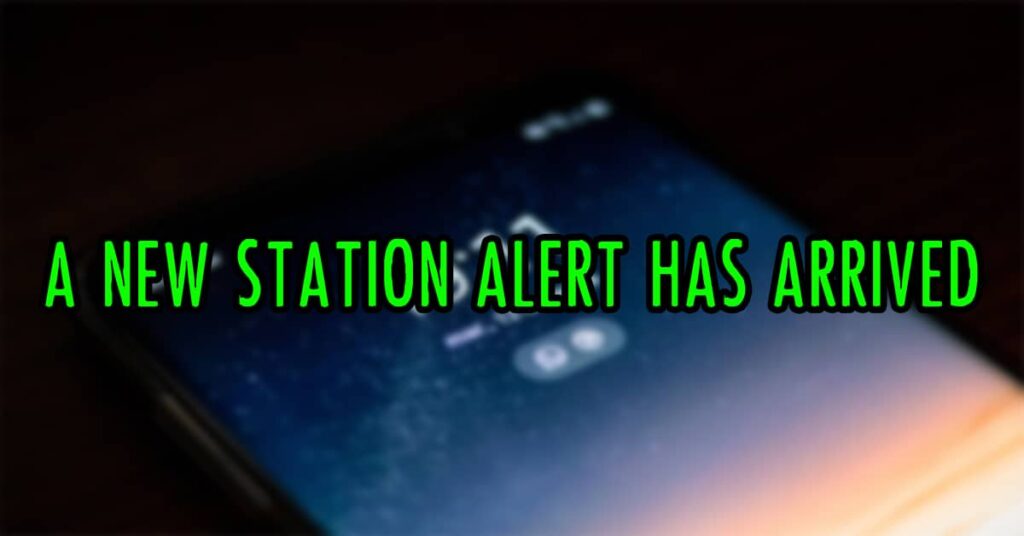A New Station Alert Has Arrived – How to Delete
Notifications are an essential part of our daily lives, keeping us informed in real-time about important updates. However, they can also clutter our screens and distract us from our workflow. That’s why knowing how to delete a new station alert that has arrived is crucial for keeping your notification center organized. In this section, we will discuss the steps you need to follow to remove a station alert notification from your device.
First, let’s clarify what station alerts are. A station alert is a notification that informs you about new updates or information related to a specific station. These alerts are designed to keep you informed in real time about any changes or important news.
However, an overload of notifications can be overwhelming, and it’s important to effectively manage your notifications to stay on top of important updates without feeling bombarded by unnecessary alerts.
If you’re using a Samsung device, deleting a station alert is a straightforward process. However, Android users can also easily delete station alerts from their devices by following our step-by-step instructions. Sometimes, it’s not about deleting individual alerts but rather customizing your notification settings to control what types of alerts you receive.
Notification channels also allow you to group alerts based on their source or category. We will explore all these options in this article to help you keep your notifications clean and organized.
By following the steps and tips provided in this guide, you can effectively manage your station alerts and keep your notifications clutter-free. So, let’s get started and learn how to stop or delete a new station alert that has arrived on your device.
What is Station Alerts?
Before we delve into deleting station alerts, let’s first understand what they are. Station alerts are notifications that inform you about new updates or information related to a specific station. These alerts are designed to keep you informed in real time about any changes or important news.
If you’re using a transportation system, for example, station alerts can help you stay up-to-date with the latest information regarding delays, maintenance work, or route changes. Station alerts can also be used in other settings, such as in retail or hospitality, to inform customers about promotions, special events, or new product releases.
Most station alerts are part of an automated alert system that is triggered when specific conditions are met. For example, a transportation company might use sensors or monitoring tools to detect when a train is delayed, and then automatically send out a station alert to all affected passengers. Other station alerts may be manually generated by employees or customer service representatives.
Regardless of how they are created, station alerts can play an important role in keeping you informed about important updates in real time. However, too many station alerts can quickly become overwhelming, and it’s important to know how to manage them effectively.
Also, read
Why Is My iPhone Battery Yellow?
Why Is My Phone in Black and White?
The Importance of Managing Notifications
Notifications play a crucial role in keeping us informed about station updates and real-time alerts. However, an overload of notifications can quickly become overwhelming and lead to distraction and stress. To avoid falling victim to notification fatigue, it’s important to learn how to effectively manage your notifications.
By reducing the number of unnecessary interruptions, you can focus on what’s important and stay on top of significant updates without sacrificing productivity.
How to Delete a Station Alert on Samsung Devices

If you’re using a Samsung device and a new station alert has arrived, it can be easily removed by following a few simple steps.
- Swipe down from the top of your screen to access your notification panel.
- Long-press the station alert notification you want to delete until a menu appears.
- Select “Delete” from the menu.
That’s it! The station alert will be removed from your notification panel.
While deleting individual notifications is useful, you can also customize your notification settings to control what types of alerts you receive. If you’re receiving too many station alerts, you may want to consider adjusting your notification preferences to only receive important updates.
Steps to Delete a Station Alert on Android Devices
If you’re an Android user, deleting a new station alert that has arrived is a quick and easy process. Follow the steps below to clear the alert from your notification center.
- Swipe down from the top of your screen to access your notification panel.
- Long-press the station alert you wish to remove.
- Tap “App Info” or “i” (depending on your device model).
- Scroll down and select “Notifications.”
- Toggle off the switch for the station alert or select “Block all.”
- The alert will now be removed from your notification center.
It’s important to note that these steps may vary depending on your Android device and operating system version.
By following these simple steps, you can easily delete a station alert that has arrived on your Android device. Keeping your notification center clutter-free is essential for staying organized and focused throughout the day.
Customizing Notification Settings
If you’re someone who receives frequent notifications, you may want to consider customizing your notification settings. This way, you can stay up to date on important station updates and incoming alerts without being bombarded with unnecessary notifications. Here are some steps to help you personalize your notification preferences:
Step 1: Navigate to Your Device’s Notification Settings
You can access your device’s notification settings by going to the settings app and selecting “Notifications.” From here, you can view and customize your device’s notification settings.
Step 2: Choose the App You Want to Customize
Scroll down your notifications list and find the app associated with station alerts that you want to customize. Tap on the app to view its notification settings.
Step 3: Adjust Your Notification Preferences
Once you’re in the app’s notification settings, you can make a variety of changes to your preferences. For example, you can choose to silence incoming notifications, prevent notifications from appearing on your lock screen, or fine-tune the sound and vibration settings to better suit your needs.
Additionally, you can choose to receive notifications only for specific types of station updates. For instance, you may want to receive alerts for major incidents or emergencies, but not for minor disruptions or schedule changes.
By customizing your notification settings, you’ll be able to stay informed about incoming station alerts and updates while avoiding unnecessary interruptions to your workflow.
Managing Notification Channels
If you receive a lot of station alerts and notifications, managing them can be a hassle. Android devices provide the ability to manage notification channels, allowing you to group alerts based on their source or category. By organizing your notifications, you can avoid missing important updates and alerts.
Viewing and Managing Notification Channels
To view and manage notification channels, follow these steps:
- Open the Settings app on your Android device.
- Select “Apps and notifications”.
- Click “Notifications”.
- Scroll down and select “See all from last 7 days”.
- Find the station alert you want to manage and click on it.
- You will see the notification channel for that alert. Here you can enable or disable the channel, change the importance level and sound, or block the channel altogether.
- Repeat for all other notification channels as necessary.
| Notification Channels | Description |
|---|---|
| Station Information | Provides updates related to station information, such as closures, construction, and maintenance. |
| Alert System | Delivers real-time alerts for emergency situations, such as severe weather warnings and natural disasters. |
By organizing your station alerts and notifications into distinct channels, you can customize your notification experience and stay organized.
Disabling Station Alerts Completely

If you’ve had enough of station alerts or have no need for them, it’s easy to disable them altogether.
- Go to your device’s Settings.
- Scroll down and select Apps & notifications.
- Select the app that sends the station alerts you wish to disable.
- Tap App notifications.
- Toggle off the switch next to Station alerts.
With that done, you will no longer receive any alerts from that app.
Troubleshooting Common Notification Issues
Notifications are an important aspect of our devices, but they can also cause frustration when they don’t work as expected. Here are some common notification issues that you may encounter and their solutions:
Problem: I’m not receiving any notifications
If you’re not receiving any notifications, there are a few things you can check:
- Make sure that your device is connected to the internet and that you have a stable connection.
- Ensure that your device’s battery saver mode is turned off as it can impact notifications.
- Check your notification settings to ensure that the app is allowed to send notifications.
Problem: I’m receiving duplicate notifications
If you’re receiving duplicate notifications, there are a couple of things you can try:
- Check if the app is sending multiple notifications for the same event.
- Disable notification mirroring on your device if it’s enabled. Notification mirroring sends notifications to both your phone and your computer, which can result in duplicate notifications.
Problem: My notifications are delayed
If your notifications are delayed, here are some potential solutions:
- Ensure that your device is connected to the internet and that you have a stable connection.
- Check your notification settings to make sure that the app is not set to “mute” or “sleep”.
- Clear the cache of the app that’s sending notifications.
Problem: I’m receiving too many notifications
If you’re receiving too many notifications and it’s becoming overwhelming, here are some tips:
- Customize your notification settings to receive only important updates.
- Disable notifications for certain apps if they’re not essential.
- Group notifications by category or app using notification channels to reduce clutter.
Problem: I can’t dismiss notifications
If you’re unable to dismiss notifications, try the following:
- Restart your device.
- Clear the cache of the app that’s sending the notifications.
- Check if there’s a software update available for your device and install it.
By troubleshooting these common notification issues, you can ensure that you receive timely and relevant updates while eliminating unnecessary interruptions.
Keeping Your Notifications Clean and Organized
Notifications are an important part of staying up-to-date with the latest information and updates. However, a cluttered notification center can be overwhelming and make it difficult to find important updates. To keep your notifications clean and organized, follow these tips:
Set Priorities
Not all notifications are equally important. Set priorities for incoming station alerts based on their importance and relevance to you. This will ensure that you receive notifications for updates that matter most and help you reduce the clutter in your notification center.
Clear Old Notifications
Regularly clear old notifications to keep your notification center clean and organized. This will make it easier to find important alerts as they come in. You can either clear notifications one by one or use the clear all notifications option.
Use Notification Channels
Notification channels allow you to group incoming station alerts together based on their source or category. This makes it easier to manage notifications and ensure that you receive only the alerts that matter. To set up notification channels for station alerts, go to your notification settings and select the corresponding option.
Customize Notification Sounds
Customizing notification sounds can be a useful way to differentiate between different types of alerts. Set distinct sounds for different types of updates or use a specific sound for incoming station alerts. This can help you identify important updates without having to check your notification center constantly.
Turn Off Unnecessary Notifications
Not all notifications are essential. If you find that you’re receiving too many unnecessary alerts, turn off the ones that are not important or relevant to you. This will help you focus on the updates that matter and keep your notification center clean.
Keep Your Device Up-To-Date
Keeping your device up-to-date is important to ensure that you receive the latest updates and fixes. This can help reduce the number of unnecessary alerts you receive and ensure that you stay informed of important station updates.
Conclusion: A New Station Alert Has Arrived
Deleting a new station alert has arrived is a simple process that can help you keep your notification center organized. Whether you’re using a Samsung or Android device, removing station alerts can be done with just a few clicks. However, it’s also important to customize your notification settings and manage notification channels to ensure you only receive alerts that are relevant to you.
If you no longer wish to receive station alerts altogether, disabling them is an option. Troubleshooting tips and solutions are available for any common notification problems you may encounter. And lastly, following best practices for keeping your notifications clean and organized will ensure you are on top of important updates.
So, don’t let a new station alert overwhelm your device. With the steps and tips provided in this guide, you can easily stop and delete incoming station alerts and stay in control of your notifications.
Sources:


